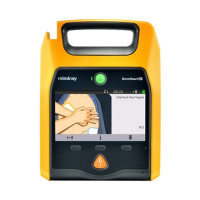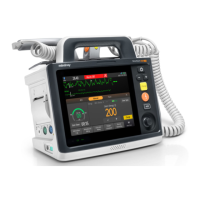11 - 3
11.4 Changing ECG Settings
11.4.1 Setting the Analysis Mode
• It is difficult for the equipment to differentiate an aberrantly conducted beat from a ventricular
beat. An aberrantly conducted beat may be misclassified as a ventricular beat. In this case, choose
the lead with a narrow R-wave for ECG1 and select Single Lead.
• When a 3-lead ECG cable is used, the equipment always uses single lead as calculation lead and the
Analysis Mode option is not available.
11.4.2 Changing ECG Waveform Settings
11.4.2.1 Selecting the Displayed ECG Leads
• Ensure that you have selected the optimal leads with the best waveform amplitude and the highest
signal-to-noise ratio. Selecting the optimal leads is important for detecting beats, classifying beats,
and detecting ventricular fibrillation.
11.4.2.2 Setting the Switch of Notch Filter
• The notch filter can only be switched on or off when ECG Filter is set to Diagnostic. In other filter
modes, the notch filter is always on.
11.4.3 Adjusting the Minimum QRS Detection Threshold
• The setting of the QRS detection threshold can affect the sensitivity for arrhythmia, ST, QT/QTc
detection, and heart rate calculation.
• If QRS amplitude is low, the equipment might not be able to calculate heart rate and false asystole
calls may occur.
• The minimum QRS detection threshold can only be adjusted when the ECG filter is set to Monitor.
11.5 Monitoring Arrhythmia
11.5.1 Arrhythmia Safety Information
• Heart rate reading may be affected by cardiac arrhythmias. Do not rely entirely on heart rate alarms
when monitoring patients with arrhythmia. Always keep these patients under close surveillance.
• The arrhythmia analysis program may incorrectly identify the presence or absence of an arrhythmia.
Therefore, a physician must analyze the arrhythmia information with other clinical findings.
• Atrial fibrillation (A-Fib) detection function is not intended for pediatric and neonatal patients.

